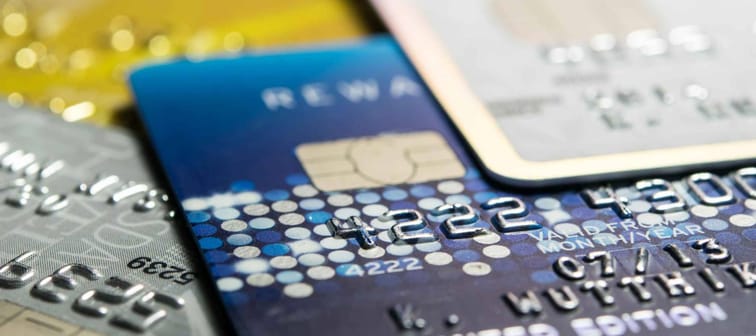1. Define your needs
OK, so you need a credit card — why? What will you use the card for?
Will you use the card to cover your routine bills, then pay off the balance every month? Or will you keep it in reserve for expensive emergencies, which you’ll pay off over time?
That question alone will help you determine whether the annual fee or the interest rate is more important for you.
Will you need cash advances? Do you need a way to reduce the cost of your high-interest debt? Or do you just want a money-saving companion when you travel abroad or go to the movies?
You can eliminate entire categories of credit cards just by getting specific about your individual needs.
For example, a secured credit card — which requires a security deposit — is pointless for someone with a high credit score, but it can be a godsend for someone trying to re-establish credit.
Earn cash back on what you buy most
Maximize your spending and earn up to 6% cash back on groceries, streaming, gas, and more. Whether it’s everyday purchases or splurges, this card puts money back in your pocket.
Learn more2. Make sure you’re eligible
Once you’re confident you’re looking at the right category of cards, it’s time to pare down the list from what’s desirable to what’s possible.
Some of the best cards available require excellent credit – above 700, at least. Companies only want to spend money courting the safest of customers who always pay their bills on time.
If you have decent credit — say, above 640 — you’ll only be eligible for some cards, and if your credit has been badly damaged, you may be forced to examine a limited range of undesirable products or opt for a credit-building card designed to improve your prospects.
In addition to your credit score, other factors like your household income and your debt will be taken into consideration. Some Capital One cards, for example, disclose that your monthly income must exceed your monthly rent or mortgage payment by at least $425.
Credit card providers don’t always post their minimum requirements online, but they often provide pre-qualification forms that will give you an estimate of whether you’d be accepted.
A pre-qualification isn’t the final word, but it also won’t harm your credit score like a full application would. That allows you to check whether you’re eligible for your top contenders.
3. Note the interest rate
If you carry a balance on your credit card from month to month, you’ll be charged interest according to the card’s annual percentage rate (APR). The lower the APR, the better.
For example, if you maintain a balance of $2,000 on a card with a 20% APR, you’d pay $400 in interest every year. On a card with a 16% APR, you’d pay $320.
Most credit cards have variable APRs, meaning they will rise and fall according to some economic benchmark, such as the prime rate.
You can find the APR range that credit cards can charge through the terms and conditions agreements on the carrier’s website, and you don’t need to apply for the card to see the terms.
You won’t know your individual APR until you complete a full application and get approved.
If you’re getting a credit card for the convenience or the rewards, and you’re confident that you will diligently pay off your balance in full every month, the APR may not matter that much.
On the other hand, if you expect to carry a balance regularly, it may be the single most important factor to consider.
The richest 1% use an advisor. do you?
Wealthy people know that having money is not the same as being good with money. Advisor can help you shape your financial future and get connect with expert guidance . A trusted advisor helps you make smart choices about investments, retirement savings, and tax planning.
Try Now4. Review the fees
The APR isn’t the only way a credit card provider can make money off you. There are plenty of potential fees, including but not limited to:
- Annual fee: This is what you pay every year for simply owning the card. An annual fee isn’t always a bad thing if the benefits — like cash back — earn more than the annual fee costs.
- Late fee: Some lenders have done away with late fees, or charges for not making at least the minimum payment on time. But others still have this as either a flat fee or a percentage of the amount owed.
- Balance transfer fee: Unless your card offers a limited-time promotion, you might get hit with this fee if you move your balance from one credit card to another.
- Foreign transaction fee: Most cards are easy to use overseas but will charge you a foreign transaction fee in exchange for that convenience. Some cards waive this fee.
- Cash advance fee: Cash advances often trigger a separate and higher interest rate compared to your ordinary purchases. It may also kick in immediately, no matter how fast you pay off the withdrawal.
As with the APR, you can find a card’s fees publicly posted in the terms and conditions.
The annual fee is usually the biggest factor because it’s unavoidable and affects everyone. If you’re planning to use your credit card very rarely as an emergency source of quick funds, you may want to look for a card with no annual fee at all.
On the other hand, if you plan to use your card regularly, you’ll need to balance the annual fee and other costs against the benefits.
5. Weigh the perks
Most credit cards offer perks of some kind to reward people for owning and using the card.
Often, this takes the form of either getting cash back on your purchases or receiving points you can trade in for goods and services.
Ask yourself a few questions about the type of rewards on offer:
- How do I earn rewards? Do you get points or cash on everything from groceries to gas? Or will you only earn rewards by shopping at certain stores or traveling with specific airlines?
- How are the rewards delivered? Some card issuers give cash back in the form of a statement credit, while others send money right to your bank account. If you're getting rewards points, check how and where you can spend them and whether you're able to lose them.
- What are your points worth? If you aren’t being rewarded in dollars and cents, you’ll need to do your homework to figure out how much value you’re getting back. The value of a point can differ depending on the program, and points sometimes provide greater value when spent on certain things.
- Are there extra benefits? Some cards provide perks that aren’t easy to attach a dollar value to. For example, a card might offer price protection on purchases, insurance on car rentals or access to a comfortable lounge at airports.
Weighing perks against fees is the most difficult part of comparing credit card offers, because it is very much an inexact science.
Try to imagine how you might use the card over the course of a year, and estimate whether that compensates for the size of the annual fee and any other costs you expect to incur.
Once you’ve narrowed down your picks to the cards that seem to offer good value, it’s time to decide which one offers the most. If you don’t see a clear winner, there is one more factor that can act as a tiebreaker.
6. Check for an introductory offer
Credit card companies know it’s hard to make the right choice, so they often try to entice potential customers with generous welcome bonuses.
That could take the form of a lump sum of cash or rewards points, unlocked when you spend a certain amount of money on the card in the first few months. Make sure to read the fine print so you know you can actually hit the minimum in time.
A signup bonus can also take the form of a promotion period. You might earn extra cash back or extra points on your spending for the first few months.
If you’re looking for a balance transfer card to reduce the cost of your debt, an essential signup bonus is a low transfer fee matched with a low or 0% APR for the first few months. That will reduce the cost of switching cards while giving you some breathing room to pay down your debt.
With the exception of balance transfer cards, an introductory offer is rarely a good enough reason to get a card on its own. If you’re not just churning and you’re planning to use the card for many years, the standard costs and perks will outweigh the signup bonus soon enough.
Kiss your credit card debt goodbye
Millions of Americans are struggling to crawl out of debt in the face of record-high interest rates. A personal loan offers lower interest rates and fixed payments, making it a smart choice to consolidate high-interest credit card debt. It helps save money, simplifies payments, and accelerates debt payoff. Credible is a free online service that shows you the best lending options to pay off your credit card debt fast — and save a ton in interest.









